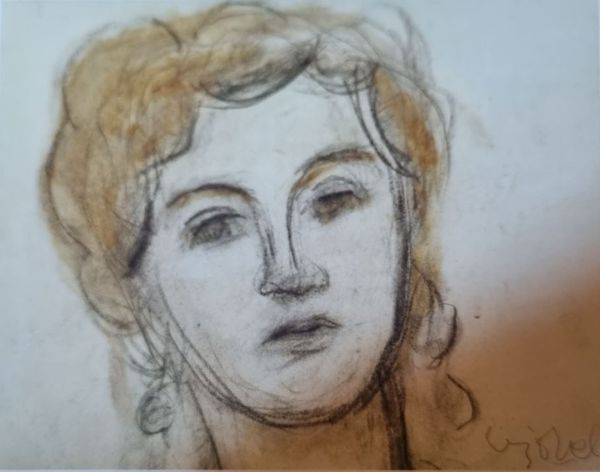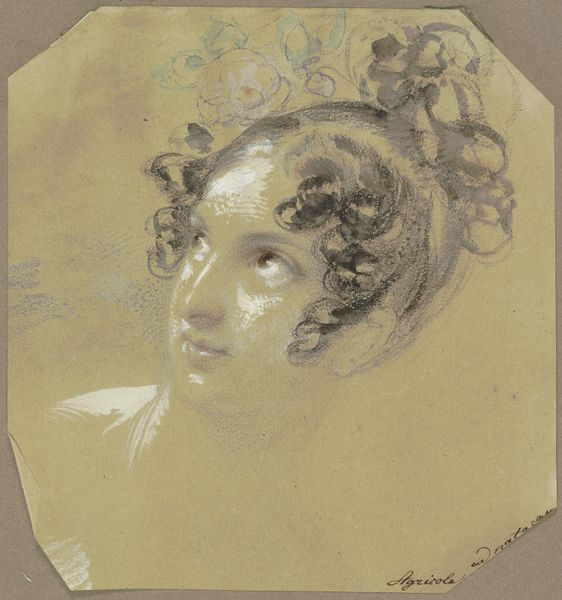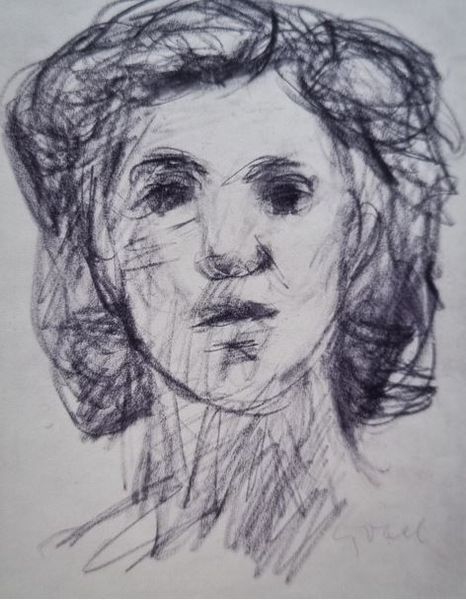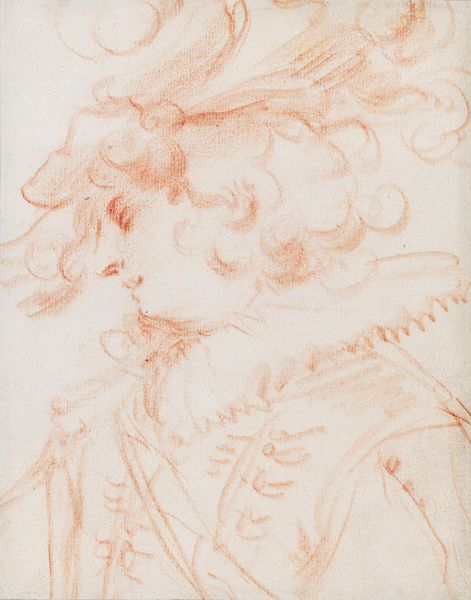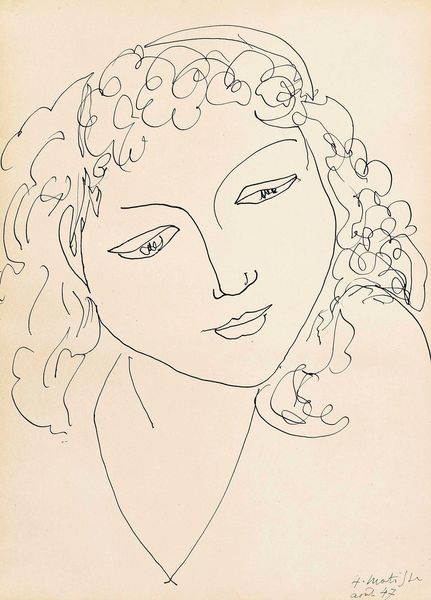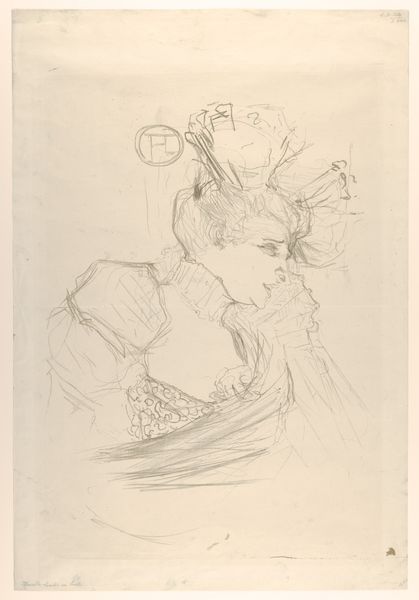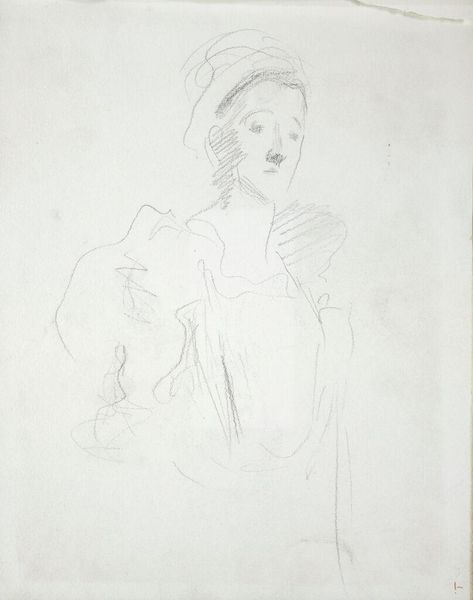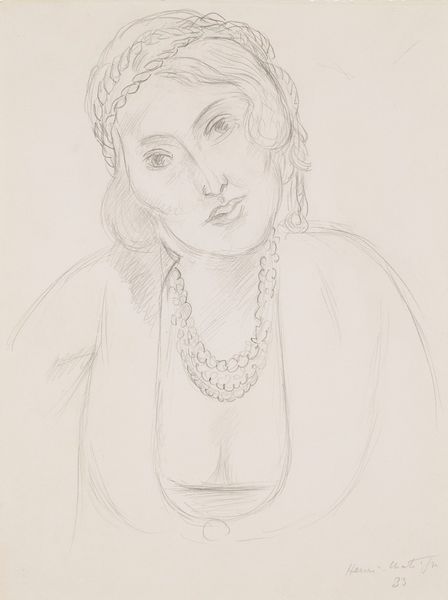
drawing, paper, ink
#
portrait
#
drawing
#
paper
#
ink
#
expressionism
Dimensions: 36 x 30 cm
Copyright: Public domain
Curator: This expressive drawing before us is "Madame Sohn," created by Egon Schiele in 1918, using ink on paper. What's your first impression? Editor: An anxious energy—you feel it in the whirlwind of those curls. They're almost violently rendered, yet somehow soft. The stark contrast suggests turmoil. Curator: I agree. Schiele's portraits are often charged with an emotional intensity reflective of his time and personal experiences. This portrait, created in 1918 toward the end of his life and World War I, embodies an intersection of social upheaval and internal struggle, marked by expressionist anguish and psychological distress. Editor: Absolutely. Consider those eyes—so large and forward, pupils centered to address the viewer. The artist almost invites us to interpret Madame Sohn's state of mind. The rendering recalls a Baroque dynamism in portraiture. It might be that her voluminous, coiled hair takes center stage in the composition as a coded representation of fertility, sexuality, and hidden wisdom. The symbolic power of her elaborate curls—and the energy radiating from them—creates a space where a female identity performs. Curator: Certainly, and by this point in history, ideas around gender and the performative nature of identity were entering public discourse. Schiele positions her to reflect modern discourse as well as age-old anxieties about the power of the feminine. What strikes you most about how Madame Sohn is situated? Editor: The bareness around her, a symbolic openness. The drawing is unfinished, so her incomplete representation may invite the viewer to participate in the image, becoming active in defining the terms of her female experience. The incompleteness may evoke not absence or want, but infinite potential. Curator: I appreciate that reading, placing the onus on the viewer. The power in the image, perhaps, lies not just in Schiele's expressionistic hand but in our engagement with the symbolism and historical context of the woman depicted. Editor: Indeed, the interplay of symbolism, suggestion, and active viewing offers a complex, enduring dialogue.
Comments
No comments
Be the first to comment and join the conversation on the ultimate creative platform.


